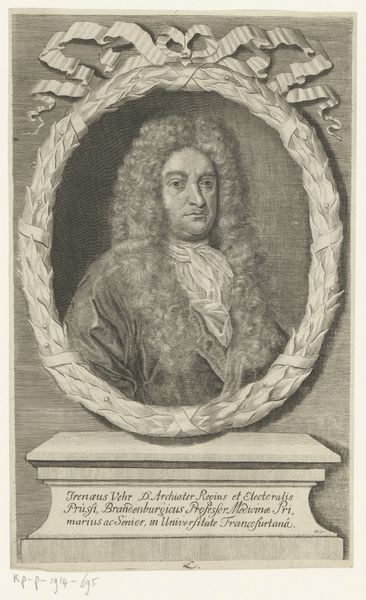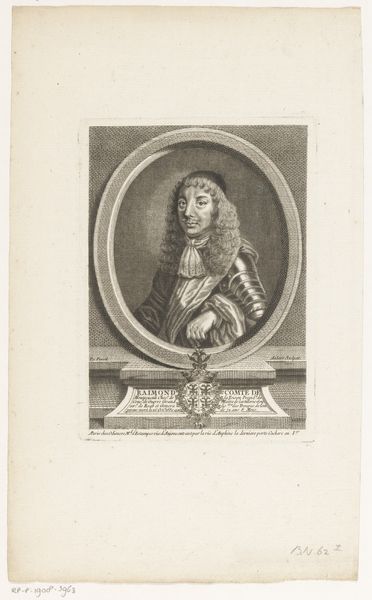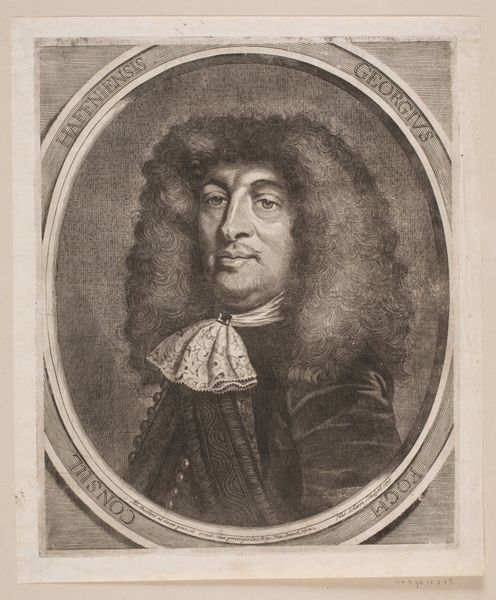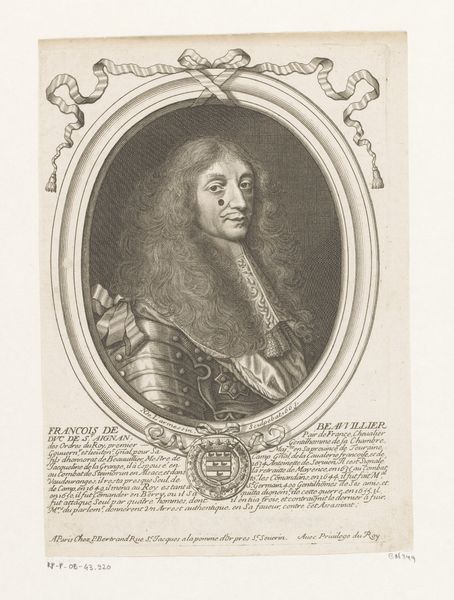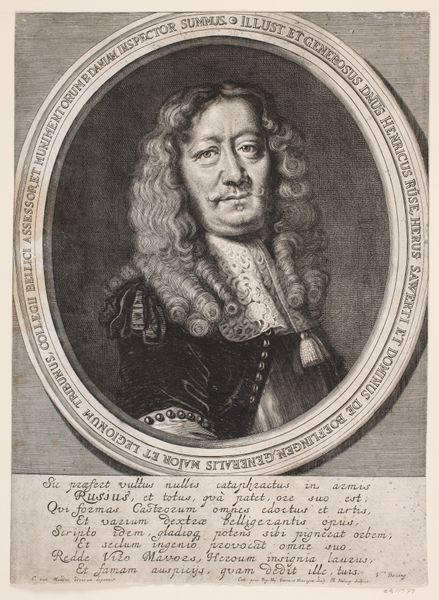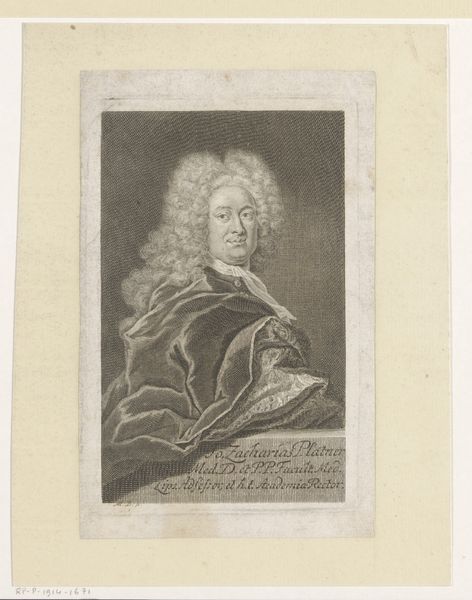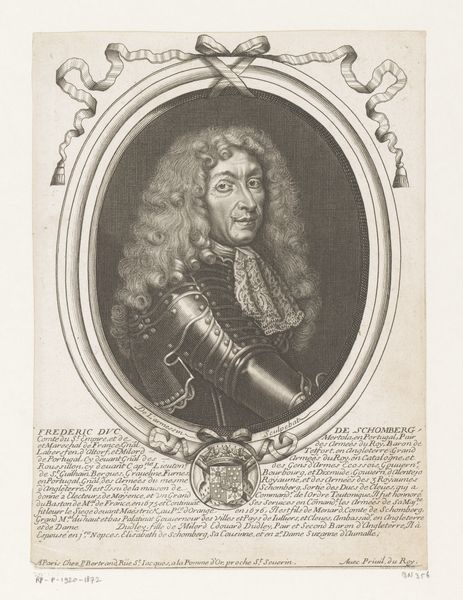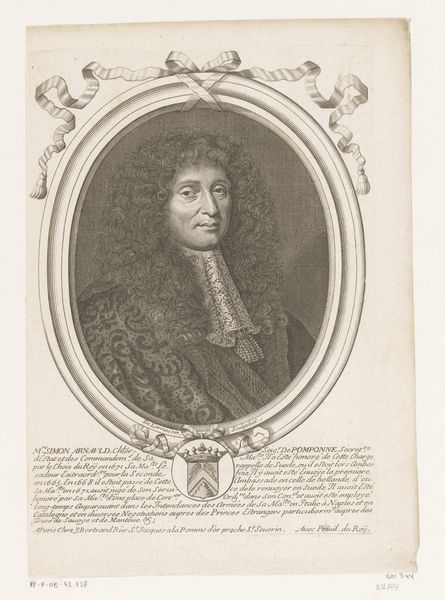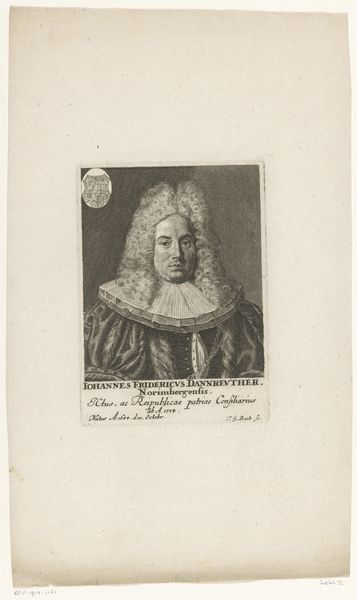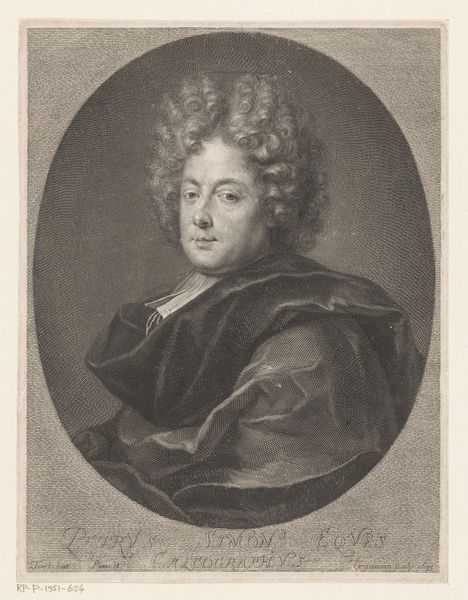
print, engraving
#
portrait
#
baroque
# print
#
engraving
Dimensions: 337 mm (height) x 245 mm (width) (plademaal)
Editor: This portrait of Christopher Parsberg, dating from around 1665-1670, is attributed to Albert Haelwegh. It's a striking engraving! I am curious about the detailed rendering. What's your take on this piece? Curator: Well, focusing on the materiality and production, it is clear this work speaks volumes about labor and class. The subject's status is broadcasted through meticulous rendering. Editor: You mean the wig? Curator: Precisely. Consider the labour needed to create and maintain such a wig, its function as a commodity signifying wealth. Look closely at the engraving. The wig's texture – the way Haelwegh translates hair into a network of lines – mirrors the burgeoning textile industry. Think about the global trade networks and artisanal skills intersecting in that singular fashionable item. Don’t you think? Editor: Yes, the link to global trade and craft production really puts the portrait in perspective. The wig itself becomes a symbol of complex material realities. It's no longer *just* a wig. Curator: It represents networks of power. Even the print medium itself – consider the artist, the engraver, the printing press, each laborer in this image-making industry. Dissemination of the image contributes to construction of fame and status, creating almost a commodity from Parsberg. How different would we view Parsberg, if, for example, this image had been etched in wood, rather than engraved? Editor: I never really considered all the craftspeople involved! Thinking about art this way offers such a rich understanding. Thanks. Curator: Glad to bring that into perspective! There are different interpretations depending on your view, after all.
Comments
No comments
Be the first to comment and join the conversation on the ultimate creative platform.

